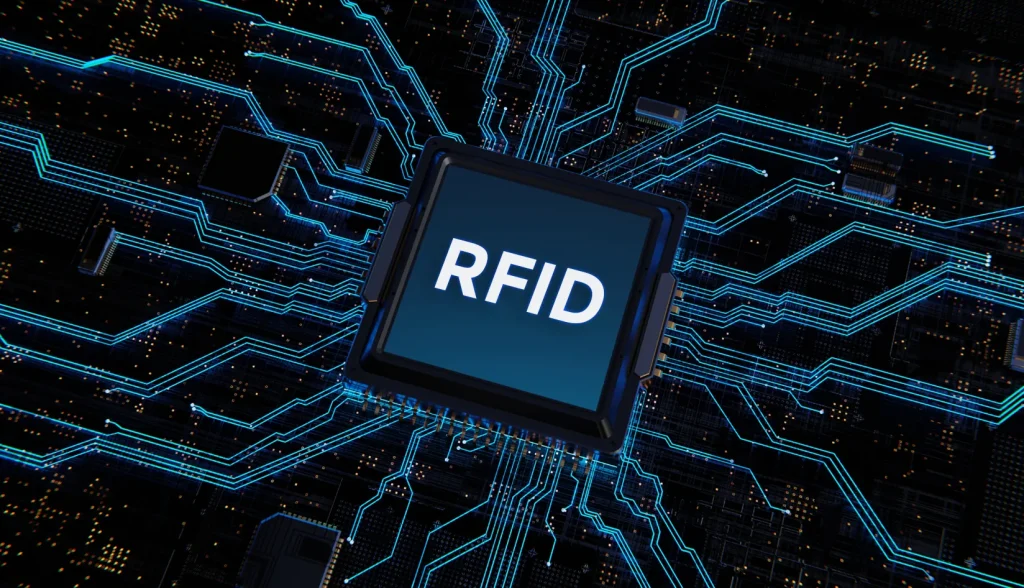The Revolutionary Impact of Active RFID Tags in Asset Tracking

RFID technology has revolutionized various industries, enabling seamless and efficient asset tracking and management. While passive RFID is commonly utilized for inventory control, active RFID tags elevate asset tracking with their real-time data transmission capabilities. These battery-powered devices continuously transmit signals, making them ideal for monitoring assets that require constant supervision. In this article, we delve into the specifics of active RFID tags, their advantages, practical applications, and how they differ from passive RFID tags.
What are Active RFID Tags?
Active RFID tags are battery-powered devices that consistently emit signals to RFID readers. This autonomy allows them to transmit data over long distances without external activation.
How Active RFID Tags Operate
Active RFID tags function by transmitting radio signals at set intervals, which RFID readers capture within their coverage area. These signals contain data such as unique tag IDs, location details, temperature readings, and other sensor-based information. This functionality makes active RFID an efficient solution for real-time tracking in dynamic environments.

Why Opt for Active RFID Tags?
Understanding the key advantages of active RFID is crucial in appreciating its value over other RFID solutions.
Key Advantages:
- Long Read Range: Active RFID tags can transmit signals over 100 meters, making them ideal for large-scale asset management in warehouses, hospitals, and transportation hubs.
- Advanced Data Transmission: The continuous signal broadcast enables real-time asset tracking without manual scanning, particularly beneficial in logistics and asset management.
- Large Memory Capacities: Active tags offer substantial storage capacity, allowing storage of complex data like operational history and sensor readings.
- Real-Time Tracking: Operating in the ultra-high frequency range, active RFID tags facilitate data transmission over extended distances, perfect for real-time location tracking.
- Enhanced Security: Active RFID ensures secure data transmission with features like encrypted communication and authentication, making it ideal for industries prioritizing security such as healthcare and defense.
Industry Applications of Active RFID
- Inventory Management: Enables real-time tracking of high-value assets, automates stock checks, and integrates with IoT for alerts and audits.
- Asset Tracking: Essential for monitoring critical equipment, preventing loss, streamlining maintenance, and enhancing utilization.
- Logistics & Supply Chain: Tracks shipments in real time, monitors transit conditions, and prevents theft with geo-fencing alerts, improving warehouse and route efficiency.
- Healthcare Management: Enhances patient safety and equipment tracking, monitors medical devices, medication storage, and temperature-sensitive supplies, automating inventory and enhancing emergency response.
Active vs. Passive RFID: Which to Choose?
Understanding the disparities between active and passive RFID aids in selecting the appropriate solution.
Differences Between Active and Passive RFID:
- Advantages: Active RFID offers real-time tracking with a range of 10-100 meters, while passive RFID is cost-effective, operates within 1-15 meters, and doesn’t require a battery.
- Applications: Active RFID suits high-value asset tracking in logistics, healthcare, and manufacturing, whereas passive RFID is ideal for inventory and retail checkouts.
- Cost: Active RFID is pricier due to batteries and advanced features, while passive RFID is more cost-effective and suitable for large-scale use.
- Battery Life: Active RFID lasts 3-10 years with battery power, while passive RFID has an unlimited lifespan as it draws power from readers.
Conclusion
Active RFID offers real-time tracking, long read ranges, and substantial data storage capacity, making it ideal for industries requiring automation and security. Despite higher costs and battery maintenance, advancements in IoT, AI, and battery technology are enhancing efficiency. Businesses in logistics, healthcare, and smart cities utilize active RFID to boost security and operational transparency, making it a game-changer for real-time monitoring and automated asset management.
FAQ
- How long do Active RFID tags last? Active RFID tags can last 1-10 years, depending on the battery type, transmission frequency, and usage.
- Are Active RFID tags secure? Yes, they utilize encrypted data transmission and secure IoT protocols to minimize theft risks.
- Why are Active RFID tags more expensive? Active RFID tags are pricier due to built-in batteries, advanced sensors, and durable designs.
- Can Active RFID integrate with IoT? Yes, it supports real-time data streaming, sensor fusion, and cloud connectivity, making it ideal for smart warehouses, healthcare, and logistics.
Featured Active RFID Tags:
- Alien Higgs®9 ABS and steel wire RFID Seal Tag

- Chemical Resistant NXP UCODE® 8 PEEK RFID On-Metal Tag | 41×29 mm

- Concrete Alien Higgs® 9 PPS RFID Tag | 46.5×31.5 mm





RFID Antenna UHF
15-Meter Cable for UHF RFID Fixed Reader
UHF Tag
4″x2″ 860-960MHz UHF RFID Label RFID M4D
UHF Tag
4″x4″UHF RFID Label Alien H3 | ISO18000-6C
RFID Antenna UHF
5-Meter Cable for UHF RFID Fixed Reader
HF Card
ABS RFID KEY-FOB Tag RFID Classic 1K
HF Card
ABS RFID KEY-FOB Tag RFID Classic 4K
HF Card
ABS RFID KEY-FOB Tag RFID Ultralight C
HF Tag
ABS RFID KEY-FOB Tag RFID Ultralight EV1
LF Card
ABS RFID KEY-FOB Tag ATA5577
LF Card
ABS RFID KEY-FOB Tag EM4200
HF Card
ABS RFID KEY-FOB Tag EM4305
HF Card
ABS RFID KEY-FOB Tag RFID TAG 213